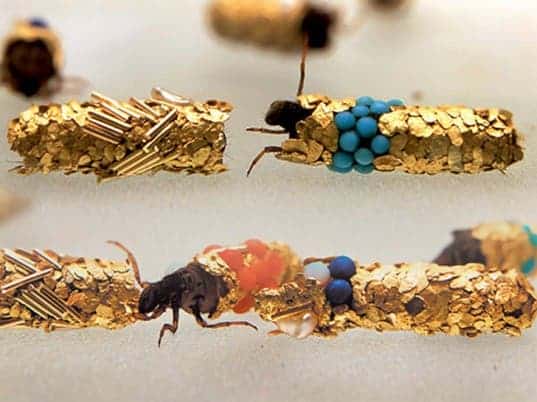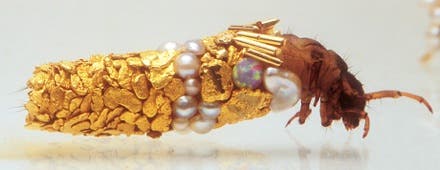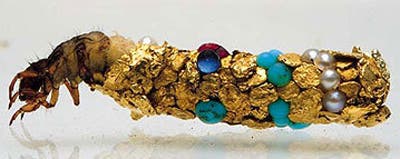The common caddisfly is, as the name calls it, common. They’re usually found near lakes, streams, ponds and rivers, and often used as a bait for trout fishermen. Their larva are aquatic and they create protective silk cases which incorporate bits of material from their surroundings, such as gravel, twigs or small pieces of shell.
French artist Hubert Duprat has “collaborated”, as he describes it, with caddis larvae by gently placing them in an environment full of gold, pearls and semi-precious stones. Without other material available, they flies spin these materials into their casings to produce breathtaking jewel-encrusted covers.
Initially starting as an ingenious scientific experiment, this turned into an imaginative artistic gesture, with the caddisflies turning the available material into dashing pieces of art, as you can see for yourself.









